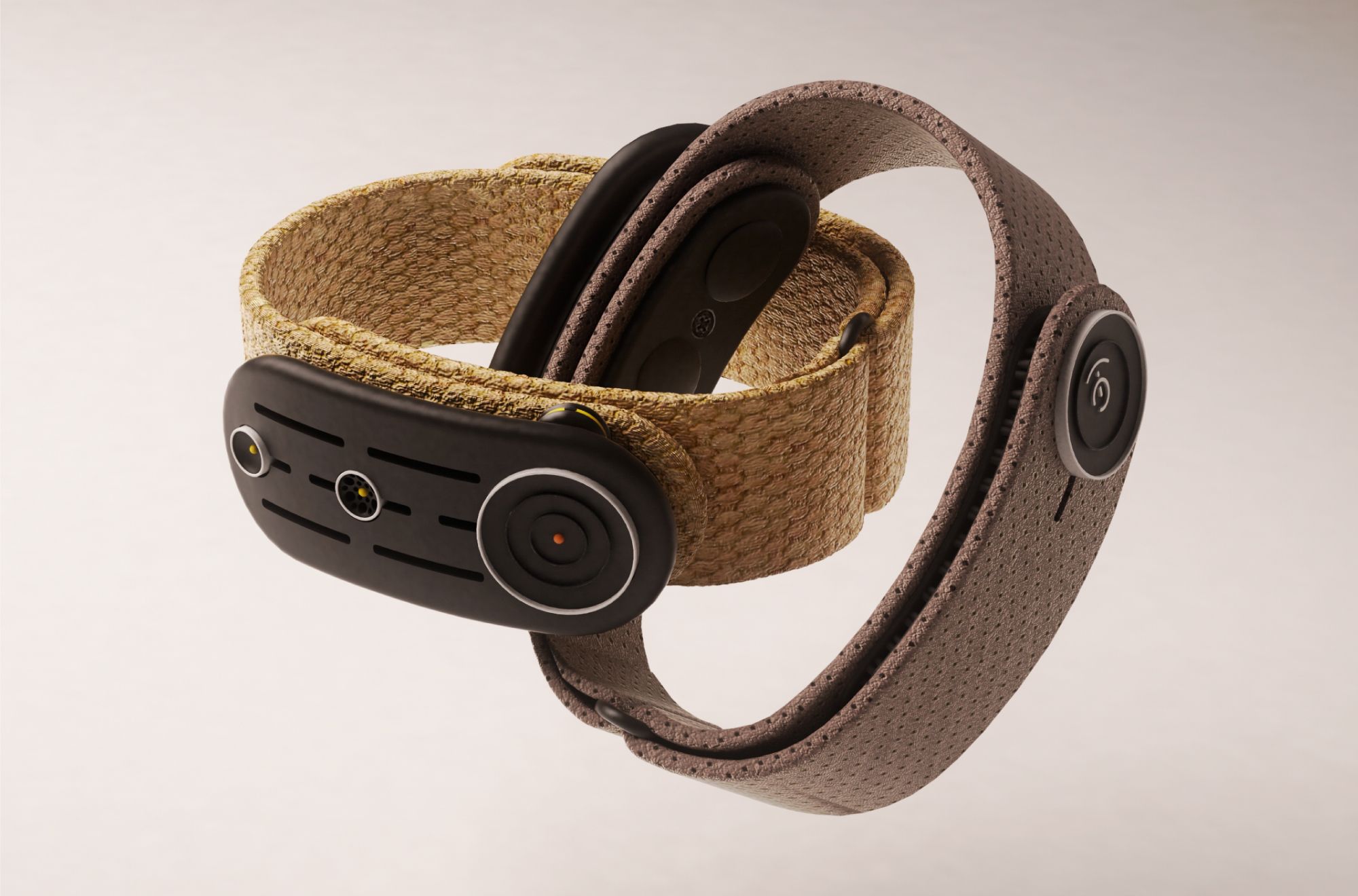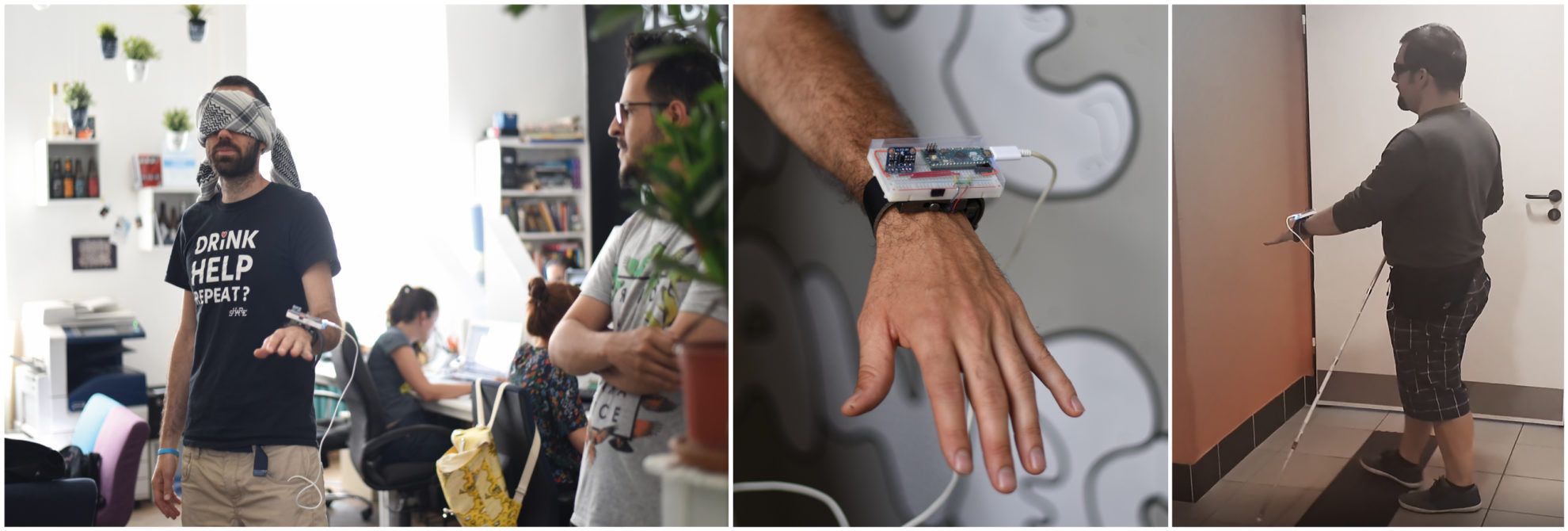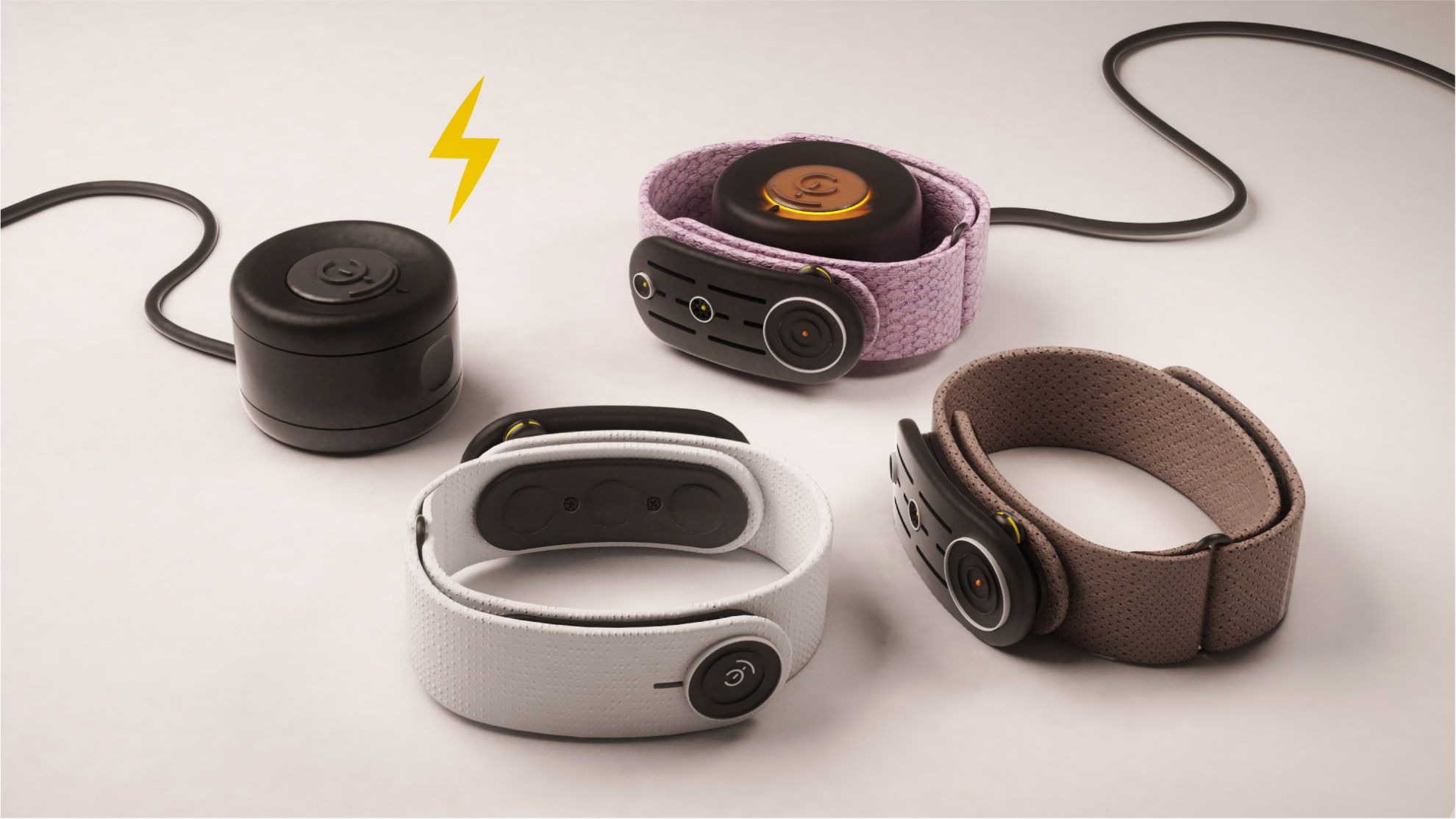A device that does not only facilitate the orientation of the visually impaired, but that can also be worn as a fashionable and customizable accessory. Senzo is an alternative assistive device for orientation promoting spatial awareness with a sensor, thus increasing the independence of its user. A significant added value of the tool is that it creates new opportunities in rehabilitating the visually impaired. We interviewed the originator of the Senzo tool, Csaba Kálmán.
Senzo required a complex design process, and its development required the inclusion of the professional fields as sociology or psychology, amongst others. What motivated you in creating the product?
The Senzo tool is part of my diploma project, and as such, I wanted to exploit as many of my interests as possible: in addition to the ones you mentioned, the various fields of physiology also motivated in me in creating the device. The topic of visual impairment embraces all these areas: it consists of physical, mental and environmental factors, it influences the internal world of the individual as well as their multi-level relationship with the outside world. In addition, it is also completely different if someone was born this way and if they became visually impaired at a later stage of their lives – taking all this into consideration, rehabilitation is also customized, which the project forms an integral part of.
On the other hand, I also wanted to create a device of value that can contribute and provide fundamental help to fields that are important to me. Even though I don’t have any relatives who are visually impaired, the inclusive work of SUHANJ! Foundation all the years I have worked with them inspired me once again to choose this path.

How does Senzo work exactly? What kind of orientation is it the most suitable for?
I have examined a lot of concepts and products in the course of my research, on which I relied greatly during product design. Based on these, I concluded that the human hand and its functioning is the most ideal for an assistive device for orientation.
Amongst the concepts examined, the intention of replacing the white cane used by the visually impaired was very popular, which also came up in the course of product development in my project, too, from several aspects. A device such as Senzo could be suitable for this purpose, but it cannot be applied uniformly in the case of every visually impaired individual owing to the diversity of the conditions, causes and characteristics of visual impairment. In cases where the use of the white cane is justified from professional perspectives, it cannot be substituted, because this passive and symbolic device gives the most direct feedback, without requiring any kind of technology.

My basic line of thought was an active object facilitating orientation that can be used both indoors and outdoors while remaining very humane at the same time. I wanted the experience of its use to be as similar to the operation of a natural sense organ as possible. So that it can truly be a device used in the course of rehabilitation, I had to consider the use of the white cane, too. To that end, the final functions were established to complement the cane in its natural environment and to supplement its deficiencies. Where the cane is not or less used, Senzo can be used on its own, as an intuitive active device offering spatial exploration opportunities.
During the research, it became obvious to me that it is quite common amongst people who became visually impaired at a later stage of life that they put off using aids and rehabilitation itself until the very last moment, because they are afraid they would be stigmatized due to the extra objects on them and due to their “disability.” However, once they get the professional help they need, they all give account of a significant improvement in living standards. Therefore, I thought of the device I designed as a customizable object that is nice to wear – to achieve this, I turned to the increasingly popular fitness and other smart bracelets and watches of similar technological complexity for inspiration, which are fashionable and desired accessories nowadays.

All in all, Senzo can primarily convey the tangible idea of the environment in a manner that the user makes searching gestures in the space with their hands as if they were shining a flashlight, and the device “translates” the proximity of objects into vibration severity. The distance information is provided by a rotatable laser sensor, which can adjust to the hand positions and gestures used the most frequently by the visually impaired, as well as to being right and left handed. When indoors, the detection distance is approximately 90 centimeters, while outdoors it’s approximately 2-3 meters, and while the user uses the cane, it senses at waist height, from where the cane cannot provide information.
In the course of development, I only developed functions other than sensory operation in a conceptual manner owing to the boundaries of the diploma project. It could serve as the vibrating “compass” of navigation applications on smart phones, and it could also function as a watch speaking in the language set in the telephone. Both functions would reduce the continuous use of the smart phones, which is a great relief during transportation. The device would also entail gesture control built on simple hits on the thighs and rotating or shaking the hands, so that users could switch between the functions easily and it would also come with wireless charging option, in the form of a small docking station.
Visual impairment has several types, including low vision, severe visual acuity loss and blindness, but it also has several degrees within that: this is why it is such an immense challenge to design for a target group where several special needs must be taken into consideration. Which target group is your device the most suitable for?
This kept changing during the design process, but currently Senzo can be useful and beneficial for a relatively wide spectrum of people.
Personal preferences are also important when choosing a device, this is exponentially true for the visually impaired. As a given individual may be recommended to buy and use a given device based on professional perspectives and the patient’s needs, but the client’s opinion must also be taken into consideration in terms of what is the best for them. For example, one of the visually impaired prototype testers said during testing that this is too much for them and they don’t want to weaken the reliable and well-working cane technique – this feedback helped me understand the environment Senzo became a part of.

Senzo can work well for both people born with visual impairment and those who acquired it in a later stage of life if they need an active sensory assistance for orientation in addition to the white cane, or perhaps even instead of it. It can also prove to be a useful tool for people who became visually impaired due to accidents or diseases, because the vibrating feedback allows the individual to have spatial orientation partly substituting vision, so it can be a perfect starting device before learning how to use the white cane. This is the condition I was able to test the most on myself and my friends with our eyes blindfolded. Vibration-based distance detection can also be suitable as a rehabilitation apparatus in the case of temporary or permanent cases, when someone has a perfect vision, but their sense of distance was injured in an accident, for example.
As you have already mentioned before, Senzo is virtually an accessory, that is a device that the user loves to wear and that feels as their own. This why it was important that the color and material of the device’s strap can be varied and customized. What do colors and textures mean for the visually impaired in a psychological perspective?
The colors and textures are important from several aspects in the case of an object with this kind of function. It is not a coincidence in the case of the popular smart accessories either that they can be purchased in countless colors, textures and forms. Each and every one of them serves the purpose of allowing the wearer (may they have a perfect vision or be visually impaired) to wear the most comfortable object providing the most pleasant feel: this is what I wanted to incorporate into my design, too.

Colors can have a role in communication, as in the case of the white cane, but here I rather aimed to make the device able to get even closer to the user. People who acquired visual imparity in a later stage of life also have favorite color from before, and persons who have never seen anything can have their favorites, too. A good example is Tommy Edison (I watched many videos of the blind Youtuber, because one can learn a lot from his experiences) who, replying to a question asked by someone from his audience, said that his favorite color is purple, because his favorite singer is Prince. For him, the color purple is associated with Prince’s music and values, which is virtually equivalent to a seen experience.
What’s your take: in which directions should your device be developed and what other functions would you like to further expand it with?
I feel like I would like to work on this or similar projects in the future for sure. The opportunities of rehabilitation are the more the merrier, because every new solution is a new opportunity that could make the process more effective. Senzo should primarily be further developed in the form of the sensory spatial exploration device, and the other functions should be built on that, in parallel with testing and gradually developing the theoretical and practical background with which this can be taught to the visually impaired.
Owing to the diversity of individual situations, many times improvisation is necessary during the rehabilitation process with the available tools, which can also give rise to the ways of use, and Senzo could hold its own in everyday life vested with all this experience.
Supervisor: Péter Vető DLA
Theoretical consultant: Bálint Veres PhD
Professional consultant: Erika Leány (rehabilitation tutor and special education teacher, National Institute for the Blind, National Adult Visual Assessment Center)
Development, modelling: Gyula Bodonyi, Fablab Budapest
Testing: the team of Noppa and the visually impaired employees of the Institute for the Blind
The INCLUSIVE article series is created in collaboration with MOME Transfer lab., the workshop of Moholy-Nagy University of Art and Design, which aims to call attention to the role of design in shaping our society.
MOME Transfer lab. (2012-2019) is an interdisciplinary research, creative and educational platform. It initiates activities along the passages and links between the different fields that promote the social visibility of people with disabilities and their self-determination through the means of inclusive design. The lab is a significant node of design promoting equal opportunities in Hungary.

Tom Cruise X Elon Musk

Micromonumental Mapping | Light art online










